Urban survival refers to anything that isn’t living in the wilderness; it’s surviving in a town, city, or major metropolitan area throughout the duration of a SHTF situation.
Urban survival suits a very different type of prepper.
Your survival skills for hunting, foraging, fishing, setting up tents, all that good stuff – it’s mostly useless in an urban area.
For the duration of this guide, forget what you know about traditional survival. This is preparing to stay hunkered down in your suburban home or apartment during a serious emergency or disaster.
How Does Survival in an Urban Setting Differ from Others?
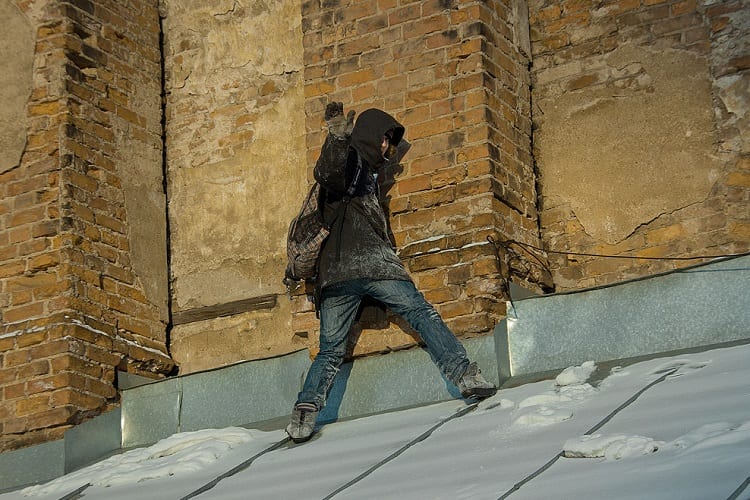
There’s no lake for you to fish in, no tents that need to be raised, and no wild deer nearby for you to bag and feast on – you’re not leaving the city, you’re just surviving in it.
These are some of the most stark contrasts between urban survival and traditional survival.
- Hunting: What hunting? You don’t have to hunt for live game and trap them. In an urban situation, you need to know where to hunt for packaged foods and grab them before someone else does (depending on the severity of the situation). It’s about finding food, not foraging or hunting for it.
- You’re Home: You don’t have to make a DIY shelter or lean-to; in fact, you’re encouraged to hunker down and only leave your home or apartment as is absolutely necessary. Your environment isn’t going to change all that much.
- Bushcraft is Non-Existent: You don’t have to worry about bushcraft skills, but you should brush up on your around-the-house DIY knowledge to properly secure your apartment or home. Your focus will be shifted from bushcraft to home security and fortification.
Urban Survival Depends on Where You Live
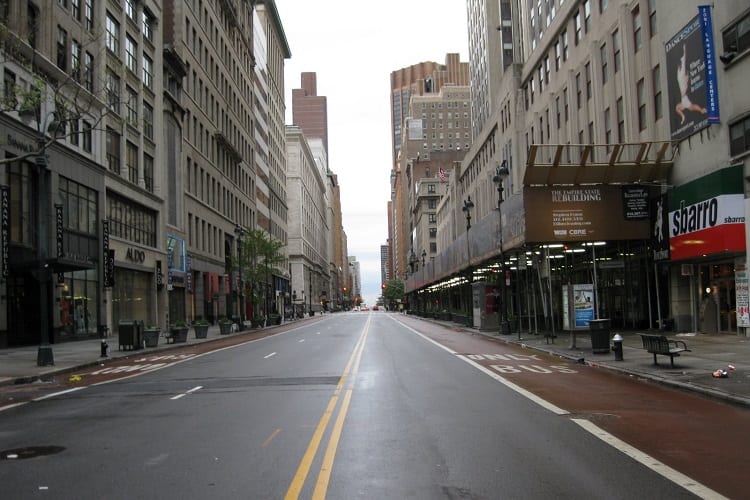
Your urban survival situation will be dramatically different if you live in the suburbs eight miles from the city center versus living in the heart of New York City or Chicago.
Those living in rural areas are more likely to either homestead, or bug out and head into the woods if necessary. You don’t have that luxury in an urban situation
Apartment
You’re part of a multi-level community, and even if you’ve never formally introduced yourself to Mr. Smith across the hallway, you might have to now.
You’re all trapped in the same building even if you have your own separate apartment units, and depending on how long the disaster is going to last, you might need to have each other’s backs.
That doesn’t mean inviting them into your home, or ever disclosing what supplies you have stockpiled, but it does mean that you could check in on one another, have radio communication to warn about looters, and help one another to feel less distressed during the disaster in question.
House
If you’re living in a home during all of this, you have some major pluses and minuses to consider. Your home is harder to fortify, is accessible via the ground floor (as opposed to apartment living), and if you’re hunkering down, people will know that you have supplies.
You’re a bigger target for looting. It’s important to have extensive self-defense provisions at the ready, and if possible, you should be staying put with friends and/or family to help fortify your position.
What to Expect in a SHTF Situation in an Urban Setting
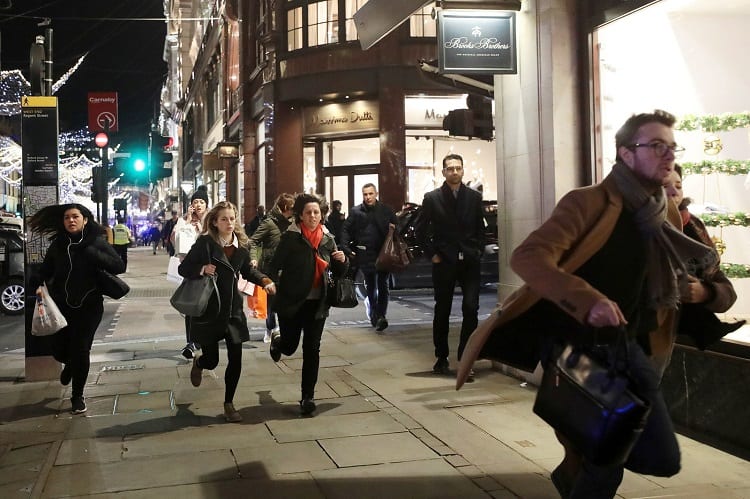
You shouldn’t expect a group of rational, critical thinkers that all let their logic speak for themselves.
In fact, a SHTF situation in the middle of a city is going to be one of the most panic-stricken places you’ll ever find yourself in. These are some of the situations you can expect.
Panic
Nothing is more powerful than fear, and panic is the representation of massive, crippling fear. When you panic, you’re a different person.
That means your priorities are in a different alignment, you’re prone to make rash decisions without thinking them through, and doing something that you will ultimately regret.
Now imagine that millions of people are undergoing the most extreme bouts of panic you can possibly think of all at the same time. It doesn’t sound like a world anyone wants to live in.
When disaster strikes, you’ll have an already anxious and depressed population (looking at you, 2020) being thrown into absolute chaos.
Mass panic will lead to turmoil, violence, and send society into a spiral. That level of hysteria won’t last for too long after the initial disaster, but that panic will manifest into ongoing paranoia, which will only fortify the longer the disaster lasts.
Even when life as we know it gets back to normal, it’s not going to look the same after traumatizing high levels of social panic.
Looting
This tends to go hand in hand with rioting. Looting is when people take advantage of mass hysteria, confusion, or rioting for their own personal gain. They will break into stores, steal items, goods, and run off into the night like rats.
Looters are the flip side of the coin to rioters. Rioters cause confusion and hysteria; looters capitalize on it.
For the most part, looting only takes place in retail stores, malls, businesses, and rarely ever in homes. Home looting tends to occur during extensive periods of extreme disaster, and while it is usually non-violent, you should still be prepared to defend yourself against it.
Riots
2020 has been some year, hasn’t it?
The riots we’ve seen all across the United States, billions in property damage, and massive destruction across the board. It hasn’t been the best display of what Americans are capable of, but it reminded us of one thing: everyone is capable of getting down to this level.
Riots adopt the mob mentality. Earlier we talked about panic rooting deeper until it becomes paranoia. Riots root even deeper to the point of total insurrection, which is when we face the possibility of Martial Law (more on tha later).
Utilities
Utilities will go out. You won’t have access to clean, safe drinking water unless the treatment plants aren’t evacuated.
It’s better to assume that even if these plants are manned, the water quality will drop with a shortage in supply lines and assistance. Because of this, you should be boiling or filtering your water.
When it comes to electricity, the grid will fail. You’ll be on your own. This becomes tricky for keeping GPS watches and cell phones charged, but thankfully we have personal solar panels to help us out there.
The biggest hurdle will be heat during winter survival. You’ll be forced to either burn possessions to create fire, or use a personal generator to run a heater (which is a bad idea for other reasons).
Don’t expect your internet to be available, either. Even through data on your cell phone. If the utilities go out, it could be due to an EMP (which would knock out cell towers for years), or it could be due to power grid failures where available utilities are allocated to government defense purposes and/or hospitals.
Bottom line is this: your utilities could go out, and you’re likely on the bottom of the totem pole for getting them restored. Most of us are.
Martial Law
Martial Law is when the president can invoke a military ruling to go full authoritarian on the American people.
This is one of the biggest fears that we all prep against, and why the second amendment is so important. The Commander in Chief can create and enforce laws without the system of due process in order.
Martial Law is used very rarely, and historically has been done during extreme disasters and panic. While we don’t have to worry about this on a day-to-day basis, it’s an unsettling thought.
The last time that the United States enforced Martial Law was in 2007 in response to the attacks of September 11th, 2001, and titled the Executive Directive 51. Prior to that, it wasn’t technically used before 1961 during the Freedom Riders issues.
Severity of Disasters with Recent Examples
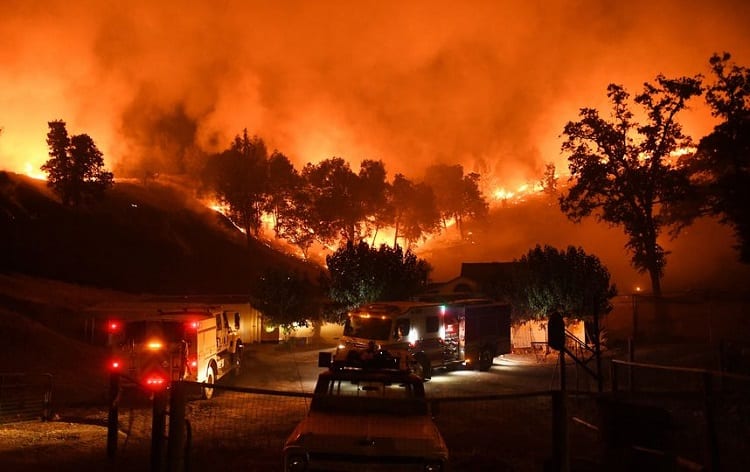
If 2020 has taught us anything, it’s that the human experiment can get really ugly, really fast.
There have been tons of disasters in the last five years alone, so let’s go through some of the worst ones to show just what could happen in an urban survival situation.
Small
Small disasters include centralized problems that don’t affect people on a grand scale. A small disaster is one that occurs in one area and doesn’t happen elsewhere, or to a small group of people versus the collective.
By labeling something as a small disaster it doesn’t reduce the severity of the disaster for those impacted, it just refers to the scale of the issue.
Medium
Flooding, massive blackouts, and looting (you can have looting without rioting). These are quick, come on suddenly, and can create complete havoc for everyone around.
While inbound weather such as torrential downpours will have some warning, they’re fast, violent acts that most of us can’t prepare for. Tornadoes and sandstorms would also be categorized as medium-level disasters based on empirical data and property damage valuations.
Large
Category 5 hurricanes, wildfires similar to the California fires, and the riots of 2020 would all classify as large problems. Anything that lasts for more than a few days (and the effects of hurricanes can last a week from inbound rain, storm surges, wind damage and more).
In 2020, we saw the worst riots in history, the most destructive wildfires ever recorded, and a record-breaking hurricane season that created category 5 hurricanes in the middle of November (which is usually when hurricanes stop or at least minimize categories/impacts).
Types of Gear Needed for Urban Survival
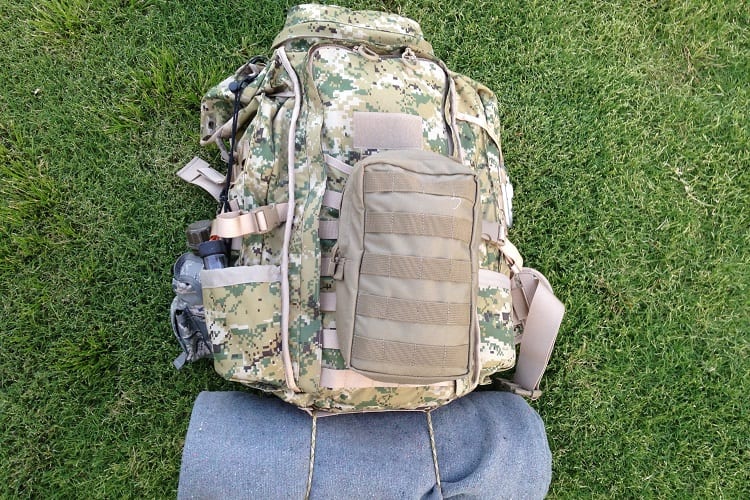
It’s often said that a tool is just an extension of your own abilities, and while that has some truth to it, your abilities are also limited by your gear. Having solid survival gear ahead of time will cut out frustration and fear from the urban survival equation.
Bug Out Bag
Bug out bags are the first thing that anyone thinks of when you mention prepping. You’ll have to assess the situation for yourself, but bugging out with the proper gear is always an option.
Urban survival usually entails hunkering down and protecting your home while utilizing a stockpile, but in the event that stockpile becomes a target, you need to be able to grab a bag and get the hell out of there.
Bug out bags contain so many useful items that help you in survival situations. Bug out bags are meant for travelling away from home, usually in the direction of an off the grid location in the wilderness.
Get home bags are more synonymous with urban survival because they can be used simply to get you home after visiting a potentially hazardous or unruly area.
Protection From Rubble
Earthquakes are on the list of disasters that could send you into survival mode in an urban environment. When these strike, there’s millions of pounds of concrete everywhere you look, and it’s likely that it could be broken into fragments just laying around.
Protecting yourself from rubble and debris proves challenging when you’re traversing over and around it.
Crush-proof boots and tear-proof clothing are going to be your best bet here. Apart from that, if you’re scavenging, you should have a pair of durable gloves that will protect your hands from scrapes and cuts.
Lights
Visibility is always going to be something that you need to focus on. In urban situations during a power grid failure, you’re in arguably more danger than someone in the middle of the woods in the pitch black of night.
At least in the woods you only have to worry about predator animals. In the city, you have to worry about hundreds of thousands or possibly millions of other people.
You have to be careful with lighting in urban situations. Too much light coming from inside of your home is going to paint a target on your back; someone will think you have a generator, and that you’re prepared enough to have supplies that they can loot.
However, you still want to have enough light to see where you’re going if you have to travel at night (tactical flashlights and solar lanterns are low-profile enough for this).
Entry Tools
Entry tools refer to anything you can use to enter a building. This could be a pry bar to remove a door, a screwdriver kit to remove hinges, or a lockpick set to gain access to certain areas.
I do not condone theft in the slightest, but if a disaster hits and the supermarkets are abandoned, that food is going to get taken by someone. It doesn’t matter how many padlocks there are; people will take it.
Entry tools are more useful for getting into your car if it’s locked, or utility rooms in your apartment if you believe that you can restore the water heater in some way. You never want to be met with an obstacle or barrier that you can’t get yourself out of.
Types of Skills Needed for Urban Survival
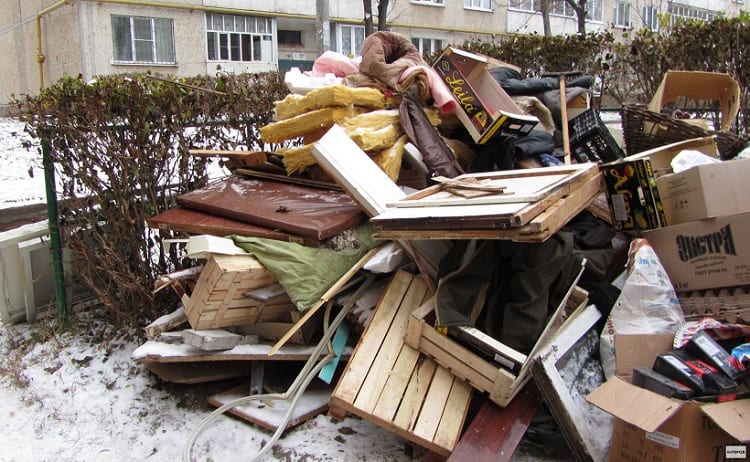
This is a different skill set than what you’re used to with bushcraft and survivalism in the wilderness.
Provided that you have these skills or you can learn them, you’ll be in a good position to survive the duration of the disaster.
Finding Shelter
What happens if you don’t live in the city, but you end up getting stuck there when a disaster strikes?
You have to make do. You don’t have a home here, so you need to find shelter to stay the night until rescue teams can come in, debris can be moved, or whatever it takes to undo the damage of the situation.
Here’s the problem: there’s likely millions of people in this city, some of which are homeless, and you have to find somewhere safe for the night.
It’s easier to find shelter in the wilderness, because at least there you don’t have to worry about an enormous number of people that could all be looking to take what you have. Disasters change people in an instant.
Finding Food and Water
This might not be so difficult in suburban areas where you have freshwater streams that you can filter, but finding food even in the suburbs, let alone the middle of a major metropolitan area, is next to impossible. It’s not about hunting in this case; it’s about locating food and taking it.
Supermarkets and big box stores are going to get hit hard during major disasters (especially if the power goes out and security cameras cease to work).
If an emergency occurs, you have to try to find food and water immediately. If you’re slow on the uptake, you’re going to be met with empty shelves.
Search for vending machines and water fountains. If vending machines are off, you may be forced to take what’s inside of them.
Water fountains will need to be filtered since you don’t know if the treatment plants have been hit or abandoned. There are ways to find food and water, but you have to be quick about it.
Scavenging
Scavengers look for and collect anything that they can put to good use.
The manta of “One man’s trash is another man’s treasure” fits right here. In a damaged or partially destroyed city, scavenging is the skill to look around, find dismantled or broken things, and collect them to use for a better purpose.
If your apartment unit isn’t fortified enough, look for objects to barricade the doors or metal bars that you can affix to the outside of the windows. If your car was damaged and can’t get you out of the city, scavenge for parts and rebuild what’s been broken.
It’s a very broad skill, but once you develop a sense for what seemingly broken things can be made useful again for your survival, it changes the game.
Repair
The more DIY know-how you possess, the better off you’ll be. Depending on what disaster strikes, being able to repair a car, reinforce a door, fix holes in the wall, and just about everything else will majorly benefit you.
You don’t have to be a Jack-of-all-trades, either: having a few repair skills will make you invaluable to your survival party’s chances.
Good Social Skills
Disasters can turn people into monsters. We’re in a disconnected world, and it’s easier than ever to be completely polarized from someone else’s perspective and opinions.
Being able to read potentially dangerous people in an urban setting is imperative to your survival, and making sure the looters don’t come for you.
If you don’t possess the necessary social skills to interact with and persuade people in a disaster scenario, it’s high time you learn. This book takes fifty years of information and teaches you to be persuasive.
That information is fantastic, but if you don’t have the natural charisma to work off of, you might fall flat
Consider checking out the Charisma on Command program or official YouTube channel to learn how to be more persuasive, and find out just how the most influential people behave in social settings to garner respect and let their leadership qualities shine through.
Urban Survival Done Right
Urban survival is an entirely different ballgame. You have to communicate with others, ensure nobody knows that you have a stockpile, avoid dangerous areas (there will be loads of them), and have the knowledge necessary to defend yourself in difficult situations.
Between forming alliances, fortifying your home or apartment, and learning to survive without bushcraft at your disposal, urban survivalists are a different breed. You can master both skill sets to be prepared in either situation, which is what I recommend doing.
Prepare, know how to hunker down, and prepare that it doesn’t turn into Road Warrior out there. Plan evacuation routes, have a bug out bag if necessary, and know your limits. You’re going to make it through anything that comes your way.


[lasso rel="emergency-preparedness-more-a-manual-on-food-storage-and-survival-2nd-edition-revised-and-updated" id="35334"]